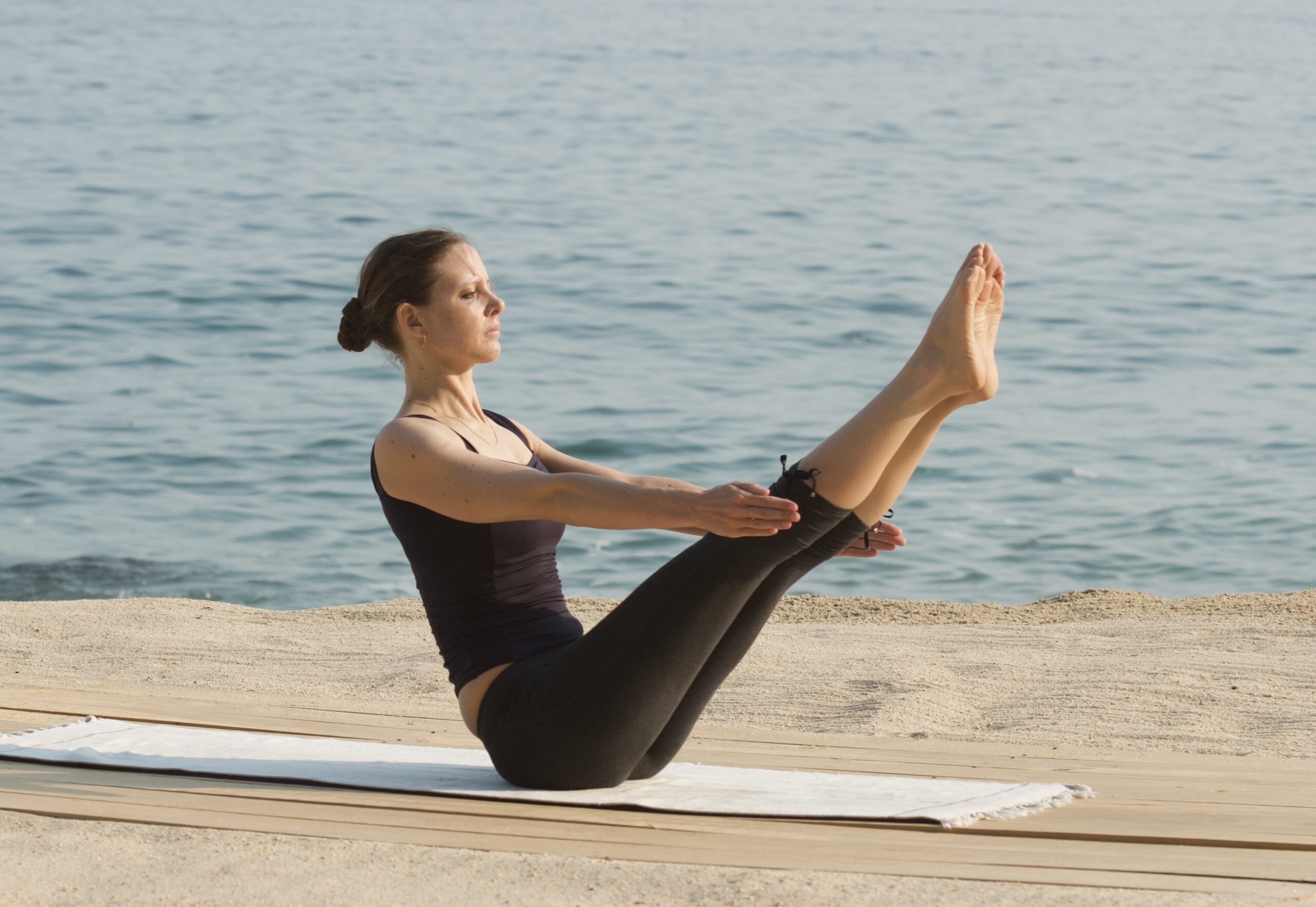Yoga Poses for Beginners
Traditionally yoga practice is commenced with the Sun Salutations. They are practiced facing the rising sun to the east. The Sun Salutations warm up the body and prepare the body for the remainder of the asana practice.
Ashtangasana – Eight Limbed Posture
Ashtangasana, the eight limbed posture. This posture is part of a Hatha yoga Sun Salutation. It is practiced after the plank posture and before the cobra posture. This posture is not included in the Ashtanga yoga Sun Salutations. Ashtangasana is entered from the plank position, by dropping the knees to the floor. Then reach the hips up into the sky, pull the hands back toward the knees and lower the chest to the floor between the hands. Then set the chin on the floor. Breath deeply for ten breaths.
In the Ashtanga vinyasa yoga system Standing postures are practiced after the Sun Salutations.
Trikonasana – Triangle Posture
Trikonasa, the triangle posture is second posture in the Ashtanga yoga standing sequence. It strengthens and stretches the legs, lengthens the hamstrings and opens the hips. Trikonasana is a wonderful posture. Begin standing in Samastitihi, equal standing posture and hop 90 degrees to the right, spreading the legs three to four feet apart and reaching the arms out to the side at shoulder height. Then rotate the right foot 90 degrees to the right and exhaling tilt the hips to the right and reach the right finger tips down to encircle the right big toe.
For beginners: If you can’t reach the right big toe, rest the right hand on the right shin.
Then reach the left hand into the sky and look up to the left thumb. Breathe deeply for 10 deep breaths. Then practice Trikonasana on the left side.
In the primary series of Ashtanga yoga, seated postures are practiced after a sequence of ten standing postures. The legs are strengthened by practicing standing postures and the entire body is warmed up and stretched.
Navasana – Boat Posture
Navasana, boat posture, is a wonderful posture, that strengthens the abdomen. In the primary series, Navasana is practiced 5 times. From a seated position raise the legs keeping them straight and point the toes. Raise the arms, until they are parallel to each other and parallel to the floor. Palms of the hands face each other and the fingers extend and touch. Look to the feet and breathe deeply for five breaths. Then place the hands on the floor in front of the hips and cross the legs, keeping them lifted, press into the hands and lift the hips on an inhale. Exhale, back into the boat posture.
For beginners: You can keep the legs bent in Navasana and when you lift between the boat poses, the feet can rest lightly on the floor.
Baddha Konasana – Bound Angle Posture
Baddha Konasana, the bound angle posture is entered from a seated position with the legs stretched out in front. Bend the knees, drop the knees down to the sides and place the soles of the feet together. Lift the chest up and straighten the spine. Breathe deeply for at least 10 breaths.
Each posture is practiced hundreds of times, before the body sinks into the posture deeply and comfortable. As it is said in the Yoga Sutras. “Sthiram Sukham Asanam” Yoga Sutra 2.46 Asanas(yoga postures) are to be sthira(steady) and sukham(comfortable or happy). Enjoy your yoga posture practice.
Caroline Klebl teaches yoga teacher training programs in Los Angeles and in beautiful destinations around the world. Join us for an upcoming yoga workshop, yoga retreat or yoga teacher training.




